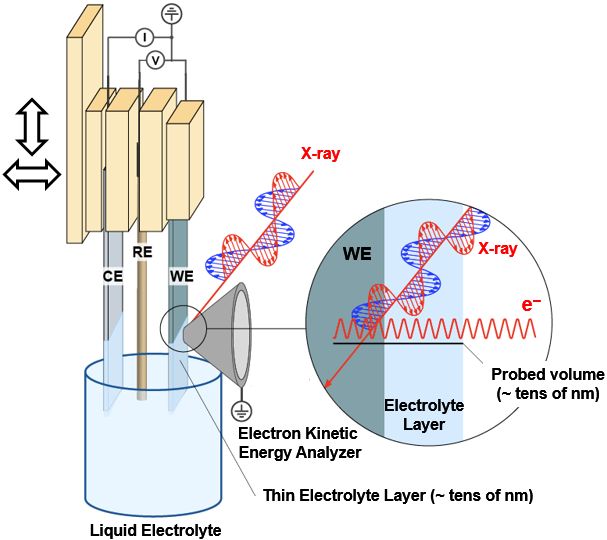Institute Solar Fuels
Synchrotron-based spectroscopy
Synchrotron-based Spectroscopy
Synchrotron-based spectroscopic techniques provide a powerful means for the chemical and electronic characterization of materials. Ideally these techniques should be used at conditions that closely mimic those present in an operating device. In the Institute for Solar Fuels we focus predominantly on the application of synchrotron-based ambient pressure X-ray photoelectron spectroscopy (AP-XPS) for the characterization of materials under conditions used in photoelectrochemical devices. The major strength of photoelectron spectroscopies for such investigations is that they can be used to simultaneously measure both chemical composition and electronic structure, allowing correlations between the two to be developed. Our approach combines soft and hard X-ray ambient pressure photoelectron spectroscopy, AP-XPS and AP-HAXPES, respectively. Soft X-ray AP-XPS is inherently surface sensitive allowing the study of gas phase water adsorption on a semiconductor surface as well as the semiconductor in contact with a thin, few layer thick condensed liquid water or aqueous electrolyte film. Due to its increased information depth, AP-HAXPES allows the interrogation of the buried interface formed between a semiconductor and a bulk-like, thin aqueous electrolyte layer. By combining these two techniques, the semiconductor/aqueous electrolyte interface can be studied as it is built-up in a step-wise fashion from its initial stages of formation to an interface closely resembling that found in a functioning water splitting device.

